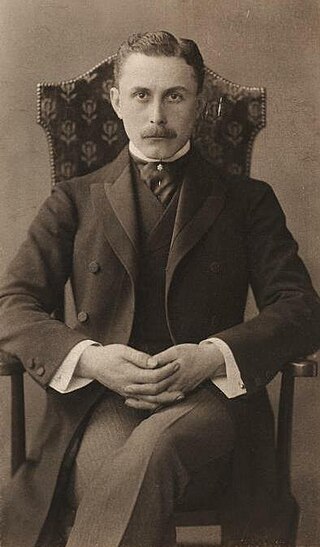
Adolf Franz Karl Viktor Maria Loos was an Austrian and Czechoslovak architect, influential European theorist, and a polemicist of modern architecture. He was inspired by modernism and a widely-known critic of the Art Nouveau movement. His controversial views and literary contributions sparked the establishment of the Vienna Secession movement and postmodernism.

Eric Richard Kandel is an Austrian-born American medical doctor who specialized in psychiatry, a neuroscientist and a professor of biochemistry and biophysics at the College of Physicians and Surgeons at Columbia University. He was a recipient of the 2000 Nobel Prize in Physiology or Medicine for his research on the physiological basis of memory storage in neurons. He shared the prize with Arvid Carlsson and Paul Greengard.

Josef Erich Zawinul was an Austrian jazz and jazz fusion keyboardist and composer. First coming to prominence with saxophonist Cannonball Adderley, Zawinul went on to play with Miles Davis and to become one of the creators of jazz fusion, a musical genre that combined jazz with rock. He co-founded the groups Weather Report and The Zawinul Syndicate. He pioneered the use of electric piano and synthesizer, and was named "Best Electric Keyboardist" twenty-eight times by the readers of DownBeat magazine.

Josef Rudolph Thomas Strzygowski was a Polish-Austrian art historian known for his theories promoting influences from the art of the Near East on European art, for example that of Early Christian Armenian architecture on the early Medieval architecture of Europe, outlined in his book, Die Baukunst der Armenier und Europa. He is considered a member of the Vienna School of Art History.

Sir Ernst Hans Josef Gombrich was an Austrian-born art historian who, after settling in England in 1936, became a naturalised British citizen in 1947 and spent most of his working life in the United Kingdom.
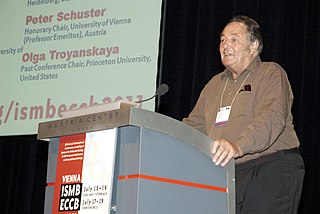
Peter K. Schuster is a theoretical chemist known for his work with the German Nobel Laureate Manfred Eigen in developing the quasispecies model. His work has made great strides in the understanding of viruses and their replication, as well as theoretical mechanisms in the origin of life.

Josef Hoffmann was an Austrian-Moravian architect and designer. He was among the founders of Vienna Secession and co-establisher of the Wiener Werkstätte. His most famous architectural work is the Stoclet Palace, in Brussels, (1905–1911) a pioneering work of Modern Architecture, Art Deco and peak of Vienna Secession architecture.

Franz Cižek was an Austrian genre and portrait painter, who was a teacher and reformer of art education. He began the Child Art Movement in Vienna, opening the Juvenile Art Class in 1897.
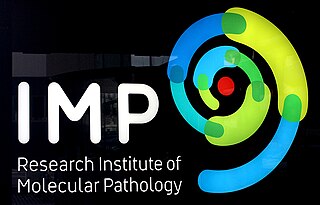
The Research Institute of Molecular Pathology (IMP) is a biomedical research center, which conducts curiosity-driven basic research in the molecular life sciences.
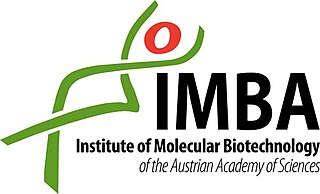
The Institute of Molecular Biotechnology (IMBA) is an independent biomedical research organisation founded by the Austrian Academy of Sciences in cooperation with the pharmaceutical company Boehringer Ingelheim. The institute employs around 250 people from over 40 countries, who perform basic research. IMBA is located at the Vienna BioCenter (VBC) and shares facilities and scientific training programs with the Gregor Mendel Institute of Molecular Plant Biology (GMI) of the Austrian Academy of Sciences and the Research Institute of Molecular Pathology (IMP), the basic research center of Boehringer Ingelheim.
The Wittgenstein Award is an Austrian science award supporting the notion that "scientists should be guaranteed the greatest possible freedom and flexibility in the performance of their research." The prize money of up to 1.5 million euro make it the most highly endowed science award of Austria, money that is tied to research activities within the five years following the award. The Wittgenstein-Preis is named after the philosopher Ludwig Wittgenstein and is conferred once per year by the Austrian Science Fund on behalf of the Austrian Ministry for Science.
Josef ("Josi") Singer is a former president and professor of Technion – Israel Institute of Technology.

The Max Perutz Labs Vienna are a molecular biology research centre operated jointly by the University of Vienna and the Medical University of Vienna located at the Vienna Biocenter. The institute is named after the Viennese-born biochemist and Nobel laureate Max Ferdinand Perutz. On average, the institute hosts 50 independent research groups. Max Perutz Labs scientists participate in the undergraduate curricula for students of the University of Vienna and the Medical University of Vienna.

The Vienna BioCenter is a cluster of life science research institutes and biotechnology companies located in the 3rd municipal District of Vienna, Austria. It grew around the Research Institute of Molecular Pathology (IMP), which opened in 1988. The entities at the Vienna BioCenter employ more than 2,000 people, including 600 students.

Denise P. Barlow was a British geneticist who worked in the field of epigenomics. Barlow was an elected member of European Molecular Biology Organization (EMBO), an honorary professor of genetics at the University of Vienna and recipient of the Erwin Schrödinger Prize of the Austrian Academy of Sciences. In 1991, she discovered the first mammalian imprinted gene, IGF2R, which codes for the insulin-like growth factor.
Arndt von Haeseler is a German bioinformatician and evolutionary biologist. He is the scientific director of the Max F. Perutz Laboratories at the Vienna Biocenter and a professor of bioinformatics at the University of Vienna and the Medical University of Vienna.
Franz-Josef Ulm is a structural engineer, an engineering scientist and a professor since 1999. He is Professor of Civil & Environmental Engineering at the Massachusetts Institute of Technology (MIT), the Faculty Director of the Concrete Sustainability Hub (CSHub@MIT). He is credited for discovering the nanogranular structure of Calcium-Silicate-Hydrates (C-S-H), the binding phase of concrete, and for the development of concepts of nanoengineering of concrete which combine advanced nanomechanics experiments with molecular simulation results. He speaks up for an environmental sustainable engineering, with “greener” concrete with lower CO2 footprint, to reduce the carbon footprint of concrete; to enhance concrete's resilience; and reduce its impact on global warming.
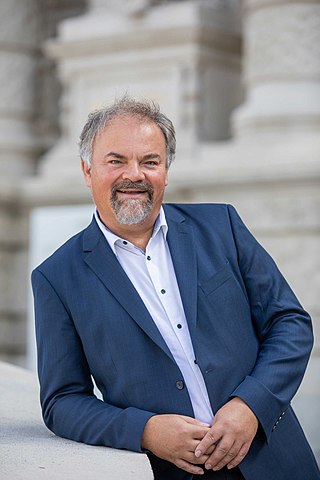
Jürgen Knoblich is a German molecular biologist. Since 2018, he is the interim Scientific Director of the Institute of Molecular Biotechnology (IMBA) of the Austrian Academy of Sciences in Vienna.
The Vienna Ball of Sciences is a ball held annually in January in Vienna, Austria. It combines classic traditions with contemporary impulses from the field of science communication. Since its establishment in 2015, the Science Ball has quickly gained a reputation as one of the most successful and largest events in the Viennese ball season

The Höhere Graphische Bundes-Lehr- und Versuchsanstalt (HGBLuVA), now commonly known as "die Graphische", founded in 1888 in Vienna, is a vocational college for professions in visual communication and media technology in Austria.















